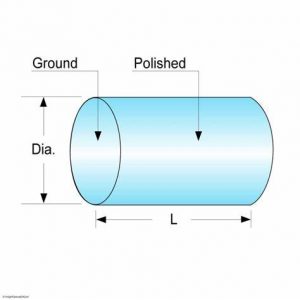
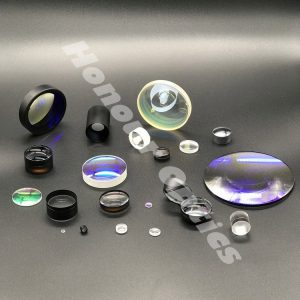
Optical lenses are the most important tools in optical design for controlling light. Optical lenses come in many shapes and sizes – from plano-convex (PCX) to aspheric. Knowing the advantages and disadvantages of each lens type is crucial when choosing between optics as each has its own purpose. Understanding optical lens geometries helps anyone, from novice to expert, choose the best optical lens in any optical design.
Common Optical Lens Terminology:
D, Dia. Diameter – The physical size of a lens.
R, R1, R2, etc. Radius of Curvature – The directed distance from the vertex of a surface to the center of curvature.
EFL Effective Focal Length – An optical measurement given as the distance from a principal plane of an optical lens to its imaging plane.
BFL Back Focal Length – A mechanical measurement given as the distance between the last surface of an optical lens to its image plane.
P, P" Principle Plane – A hypothetical plane where incident light rays can be considered to bend due to refraction. EFL is specified from a principal plane location.
CT, CT1, CT2, etc. Center Thickness – The distance from a primary principal plane location to the end of an element.
ET Edge Thickness – A calculated value which depends on radii, diameter, and center thickness of a lens.
db Entrance Beam Diameter – Diameter of collimated light entering an axicon.
dr Exit Beam Diameter – Diameter of ring of light exiting an axicon.
L Length – The physical distance from end to end of a cylindrical element or the distance from apex to work piece of an axicon.
Common Optical Lens Geometries:
Plano-Convex (PCX) Lens
Ideal for collimation and focusing applications utilizing monochromatic illumination. Note: Orient the curved surface of a PCX lens towards the source for optimal performance.
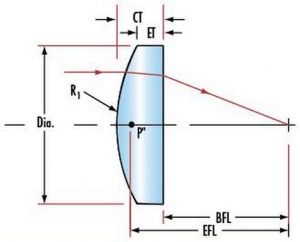
Double-Convex (DCX)
Ideal for image relay, and for imaging of objects at close conjugates. Note: Aberrations will increase as the conjugate ratios increase.
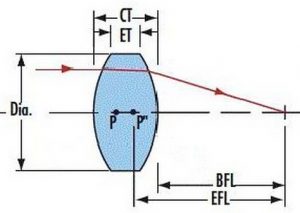
Plano-Concave (PCV) Lens
Comprised of one flat and one inward curved surface. Ideal for beam expansion, light projection, and expanding the focal length of an optical system.
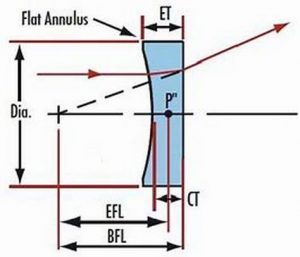
Double-Concave (DCV) Lens
Comprised of two inward, equally curved surfaces. Ideal for beam expansion, light projection, and expanding the focal length of an optical system.
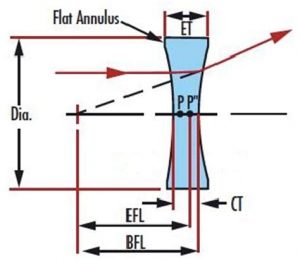
Meniscus (Convex-concave) lens
It can be either positive or negative, primarily used for focusing to small spot sizes or collimation applications
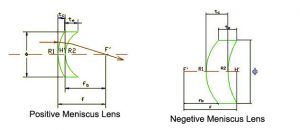
Positive Achromatic Lens
Performs similar function as a PCX or DCX lens, but can provide smaller spot sizes and superior image quality. Achromatic lenses are useful for reducing spherical and chromatic aberration. Negative version for diverging light as available.
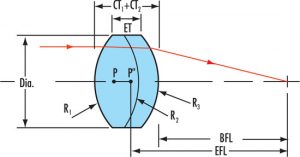
Aspheric Lens
Ideal for laser focusing or for replacing multiple spherical lens elements in a system. Useful for eliminating spherical aberration and greatly reducing other aberrations.
Positive Cylinder Lens
Ideal for focusing incoming light to a line or to change the aspect ratio of an image. Negative version also available.
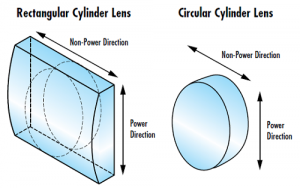
Plano-Convex (PCX) Axicons
Ideal for focusing laser light into a ring with a constant thickness. Note: A smaller apex angle generates a larger ring.
![]()
(Full) Ball Lens
Ideal for fiber coupling, endoscopy, and barcode scanning applications. Half ball lens version also available.
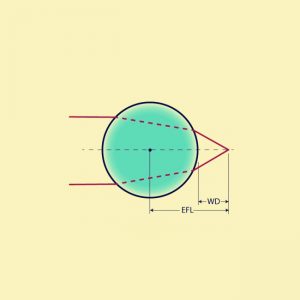 Rod Lens
Rod Lens
Ideal for fiber coupling and endoscopy applications. 45° version also available.
